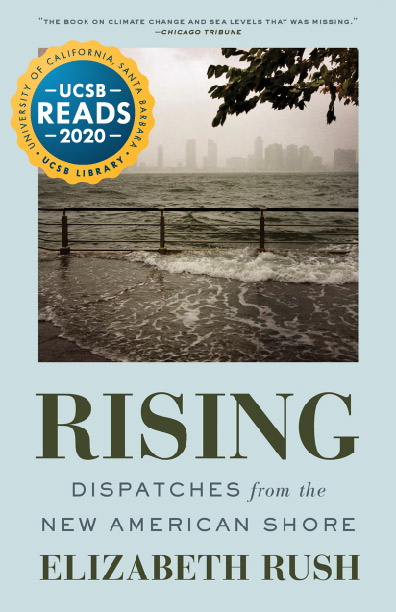
UCSB Reads: “Rising: Dispatches from the New American Shore”
Presented by the UCSB Library in partnership with the Office of the Executive Vice Chancellor, UCSB Reads has selected “Rising: Dispatches from the New American Shore” by journalist Elizabeth Rush as its 14th annual official book selection. By reading the same book, UCSB Reads engages the public for a community-wide discussion about a critical topic. “Rising,” about the impact of rising sea levels in the US, was chosen by an advisory committee made up of staff, faculty, students and community representatives because of its relevance and powerful message. UCSB Reads 2020 will begin in January with Chancellor Henry T. Yang, Executive Vice Chancellor David Marshall and University Librarian Kristin Antelman distributing free copies of the book at the UCSB Library. Following the book distribution, the library will sponsor various discussions, talks, exhibitions, film screenings and other events related to the book. In May, Rush will be visiting UCSB to give a free public lecture on how a person’s race, class, national origin and income can lead them to become more vulnerable to rising sea levels. This year, for the first time, UCSB Reads will also be requesting contributions from the community for an art exhibition based on the themes in “Rising.”
California to Require Medical Abortions on Campuses

On October 11, 2019, Governor Gavin Newsom signed Senate Bill 24, which will require public colleges and universities across California to provide students with access to abortion pills that will induce a medical abortion for women pregnant up to 10 weeks. The bill, which was vetoed by former governor Jerry Brown in 2018, had been crafted by Senator Connie Leyva 3 years ago and will go into effect in 2023. This makes California the first state in the nation to require public colleges and universities to provide abortion pills to students. Hailed by many women’s reproductive rights advocates as a milestone, the legislation stands in stark contrast with recent bans on abortion in some conservative states. According to a study published in the Journal of Adolescent Health, an estimated 322 to 519 students attending California’s public universities seek medical abortions every month. Many of these students do not have the money to pay for medical abortions and/or do not have easy access to a facility that offers this service. The goal of this bill is to make the process easier for students, who will be able to receive a medical abortion in their campus’ student health center. These abortion pills must be taken within a 48-hour period to induce miscarriage; whereas the morning-after pill works by releasing a high dose of synthetic hormone to delay or stop the release of an egg.
50th Anniversary of ARPANET, the Precursor for the Internet
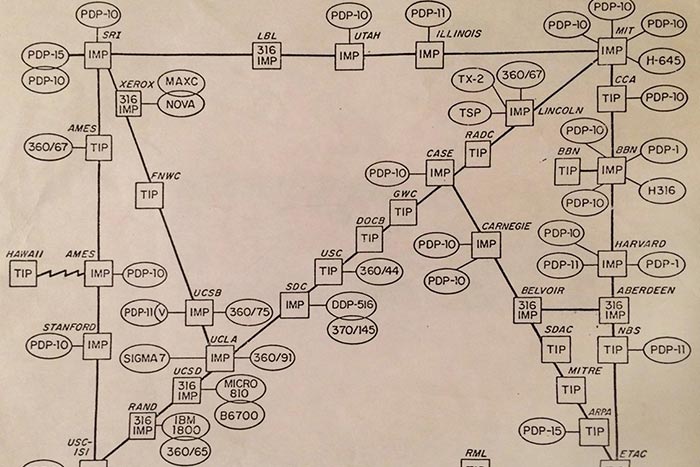
Fifty years ago, on October 29, 1969, University of California, Los Angeles (UCLA) graduate student Charley Kline and Stanford Research Institute (SRI) programmer Bill Duvall were able to make the first successful host to host connection through ARPANET. Before ARPANET, computers spoke different languages and couldn’t communicate with one another. Without a network, every time someone wanted a different software, they had to request a new machine, which, of course, was costly. ARPANET was able to revolutionize technology by connecting different kinds of computers together, and it became the precursor of what people know as the internet today.
Back then, people used a circuit-switching network if they wanted to connect two computers, which required a circuit - such as the telephone system - to be established. ARPANET, however, utilized a packet-switching network, which breaks down information into chunks – or “packets” – and sends them individually. Therefore, information is free to travel independently through a range of routes. ARPANET began by connecting four independent network nodes, one of them at the University of California, Santa Barbara. The first node was established when Kline successfully transmitted a message from UCLA to Duvall at SRI. Kline was supposed to send the command “LOGIN” to Duvall, but during the first attempt, the computer crashed after sending the first two letters - “L” and “O”. Duvall adjusted the parameters, and Kline was able to successfully login to the computer at SRI an hour later. By December 5, the initial four-node network was established. Since then, ARPANET continued to expand until it became what people know as the World Wide Web.
The Prof Who Gave A Voice To Kids in Jail
It wasn’t his plan, but Richard Ross has become a de facto expert on the subject of juveniles in detention. And now, for his groundbreaking — and, at times heartbreaking — work documenting the lives of incarcerated youth, the UC Santa Barbara Distinguished Professor Emeritus has received the 2019 Claes Nobel World Betterment Award from The National Society of High School Scholars (NSHSS).
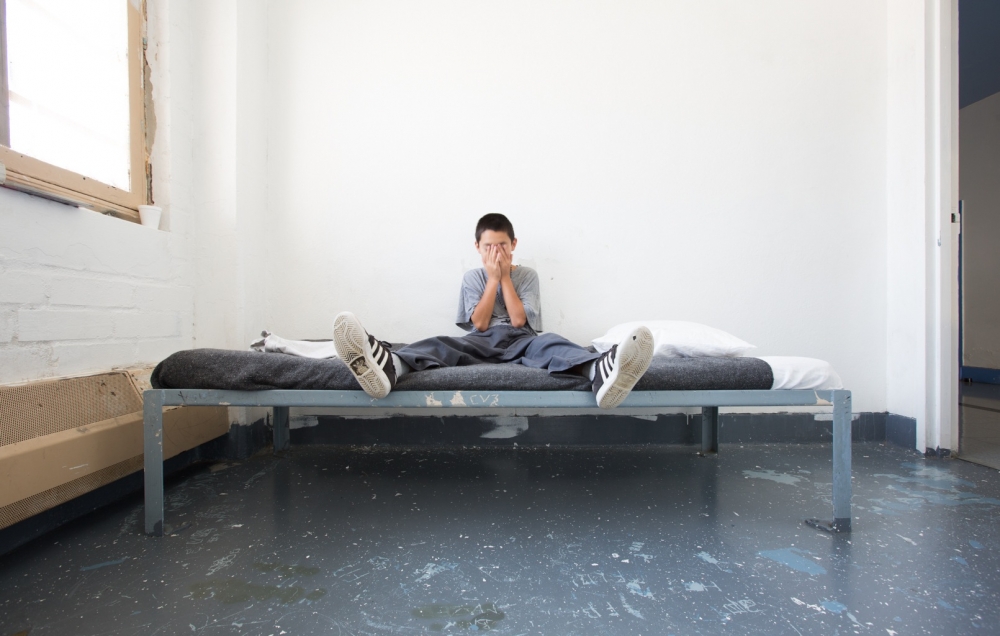 Y 12. Photo: Richard Ross.
Y 12. Photo: Richard Ross.
Established in 2013 to highlight outstanding role models for young people, the Betterment Award recognizes individuals who are making exceptional contributions to the promotion of global unity and cultural understanding in their particular area of influence.
Ross, a photographer and activist, is the creator of the award-winning three-volume “Juvenile In Justice Series,” which includes “Juvenile In Justice” (2012) “Girls In Justice” (2015) and “Juvie Talk” (2017). “Juvenile In Justice” documents the placement and treatment of juveniles in facilities that are meant to assist, confine and/or punish them. “Girls In Justice” explores the conditions and contexts of girls — ranging in age from 11 to 18 — remanded to detention centers, and in “Juvie Talk” Ross uses the teens’ and adolescents’ own words and vernacular to share what is true about their lives in juvenile placement centers.
“It is, of course, a great honor to receive this award,” said Ross. “These kids are the stakeholders and their peers with less privilege and opportunity are the ones who are in juvenile hall, shelters or group homes. So I am asking them to pay attention to those who are not in the room.”
Ross’s work has taken him to over 400 sites and 35 states with interviews of more than 1,000 adolescents. Given the sheer number of detention centers he has visited, as well as the number of residents he has interviewed, Ross has a rare perspective on the lives and histories of the teens and adolescents he has photographed. He also has become a conduit between them and the world, giving voice to kids who otherwise have no way to speak up. And the majority of those he has queried have been willing to talk.
—Andrea Estrada, OPAC
UCSB Sues Walmart, Target, Bed Bath & Beyond, Amazon and Ikea

UC Santa Barbara filed a lawsuit against Walmart, Target, Bed Bath & Beyond, Amazon and Ikea over the unauthorized distribution of filament LED bulbs developed by researchers at the University.
These filament light bulbs mimic the incandescent light bulbs invented by Thomas Edison over a century and a half ago. Unlike Edison’s light bulbs, however, these LED bulbs cost less, work more efficiently and do not contain toxic filaments. The light bulbs were developed by three UCSB professors—James “Jim” Speck, Steven DenBaars and Nobel Prize laureate Shuji Nakamura—who began patenting this technology in the early 2000s. Despite the patents, retailers started profiting from unauthorized sales of this technology, even after receiving warnings from the University. In December 2017, UCSB sent a “notice of infringement” to Target and Walmart for exploiting intellectual property, and after unsuccessful attempts to form licensing agreements with retailers, UCSB took the case to court. If the case is not settled, the International Trade Commission holds the right to impose an import ban. Since filament LED light bulbs became available in 2014, the market has grown substantially. Last year, the LED lighting market reached $45.57 billion, and in 2019 alone, sales are projected to be more than $1 billion. The amount of compensation will vary on a case to case basis, but UCSB will be expecting retailers to compensate for past royalties as well as future ones. If the lawsuit is won, money will be split between the litigation firm, the inventors and the University. The goal is to invest the royalties back into education and fund future research.
UCSB Athletic Programs Commit Violations
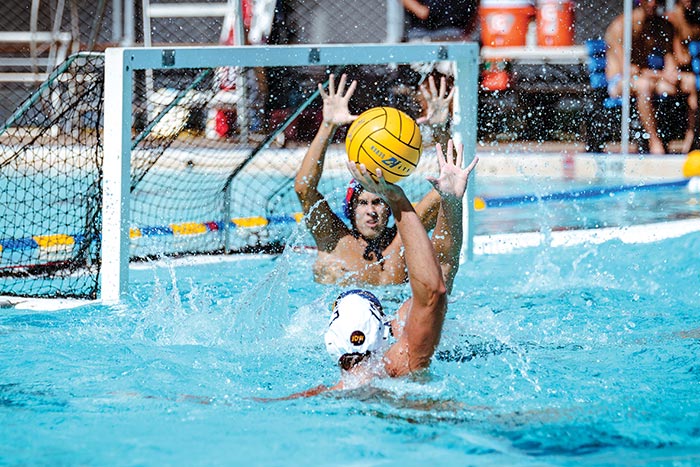
Photo: Irene Chan.
UC Santa Barbara men’s water polo program and men and women’s cross country and track programs have been charged with violating multiple rules and restrictions, according to a Division I Committee on Infractions panel. The former coach of the track program had required student-athletes to log in their training activities during summer and on their in-season weekly day off. While it is prohibited for the coaching staff to suggest an expectation for students to train during those periods, the former coach allegedly reviewed student-athletes’ logs and reprimanded those who did not meet his expectations. In the men’s water polo program, the head water polo coach had been found to have violated benefits rules by facilitating housing for a student-athlete before they enrolled at the University. In another incident, the head water polo coach and assistant water polo coach have been found to provide extra benefits for two athletes who worked at their water polo club. The two student-athletes were paid with a stipend that was well above the going rate for other students who worked at the club, and the coaches paid the students even when there was no documentation that they worked. As a response, Division I enforced a two-year probation and a two-year show-cause order for the water polo coach, among other restrictions.
Third Annual UCSB Alumni Day of Service 2019
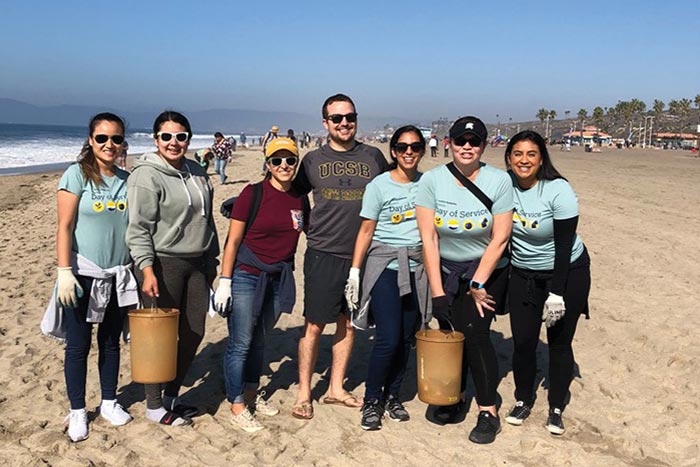
7 Countries. 20 States. Over 450 Gaucho participants.
On November 16, 2019, Gauchos all over the world dedicated time and energy toward a better community. Thank you for making a difference in your community and inspiring the Gaucho family around the world!
A Flashback to UCSB and Isla Vista in the 70s
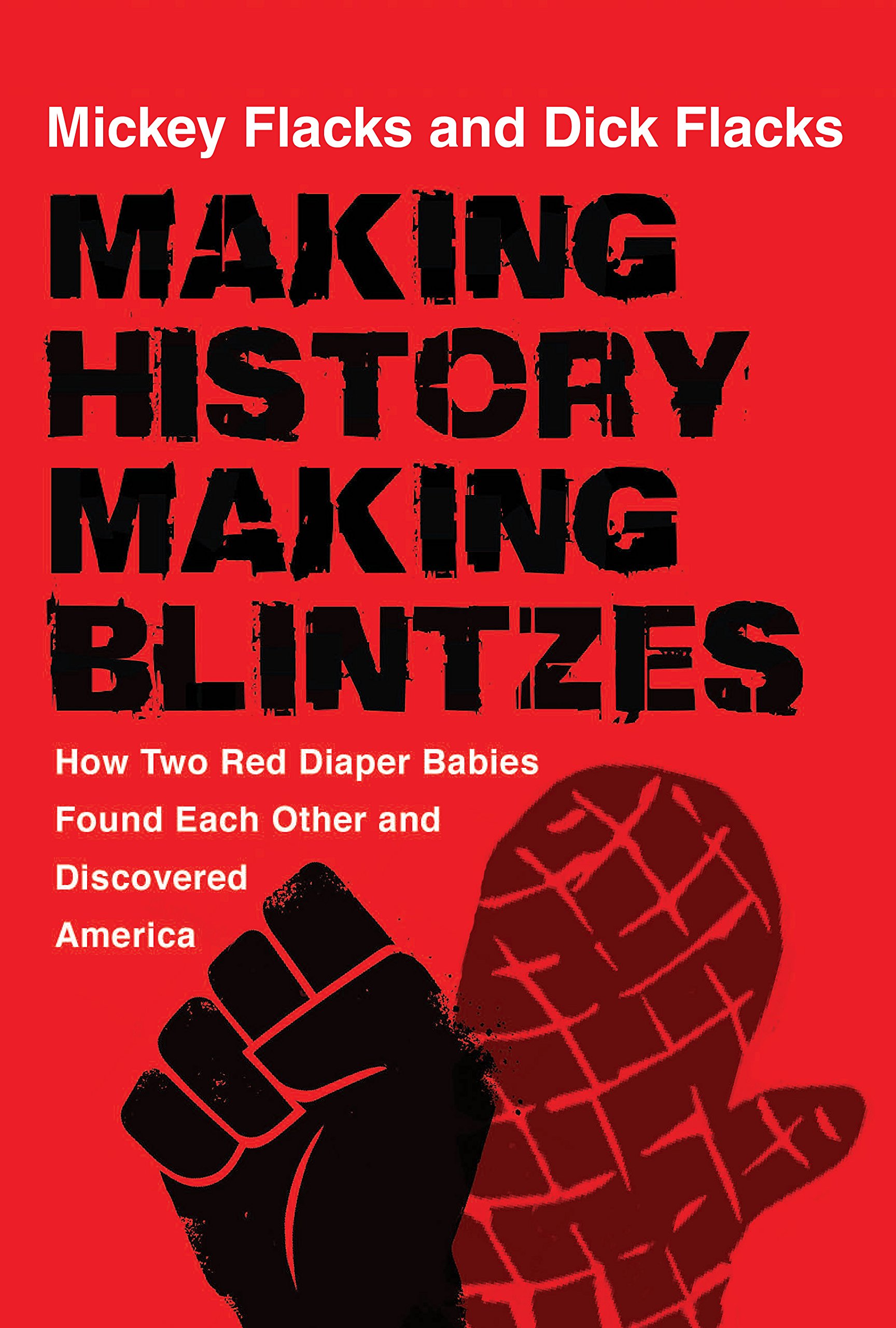
Emeriti Professor Richard Flacks was a key figure in campus politics during the 1970s and 1980s. He and his wife Micky recently published a memoir, “Making History, Making Blintzes.” The couple was also very involved in community politics and to this day are active in local land use and environmental issues. Flacks wrote a number of books during his tenure at UCSB, many of them describing the student social movements of the 60s, 70s and 80s. The following is an excerpt from their memoir.
When the Santa Barbara campus was established as a branch of the University of California system it was situated on a former Marine base adjacent to a sparsely populated piece of land that overlooked undeveloped and pristine beaches. Local developers saw the opportunity to capitalize on the need for housing for a rapidly growing student population and so almost overnight a village to house thousands of young people was constructed; the county board of supervisors guided by developer interests, adopted zoning rules that relaxed standard density requirements, so that a very compact, dense, student residential world was instantly created. Land values skyrocketed from $2,000 to $1001000 per acre, and dense building was allowed on the bluff overlooking the Pacific Ocean-a bluff that was notoriously unstable. All this feverish development was a marked contrast to the long history of local effort to protect the fabled beaches and idyllic way of life from destructive overdevelopment.
When the campus was initially planned, university administrators were advised by a well-known planning firm to ensure that the student residential community at UCSB be operated under university control; other University of California campuses developed in the sixties, especially at Santa Cruz and San Diego, were successfully planned in that fashion. But local developer interests insisted that student housing be turned over to the private market, and they prevailed. Indeed, campus administrators helped set up a special local bank to serve as the financial center of this development and the administration acquiesced to the high-density zoning that the developer interests promulgated. The result, by the late sixties, was an obviously jerry-built Isla Vista inhabited by fifteen thousand people under age twenty-five and hardly anyone older. The university largely adopted a hands-off attitude toward the community and accordingly there were very few amenities and services.
Isla Vista, by the time we arrived, was a world largely created by the students themselves. Given the rising cultural tides of the 1960s it became a haven for the drug culture and a heaven for hippies. Inevitably, the unauthorized practices of the members of the Isla Vista scene inflamed a police force whose members had little inclination or training to understand any of it. It was in this social environment that the spark of Bill's dismissal was ignited.
There had already been troubles with the police. Just a couple of months earlier, Black Student Union leaders who had been involved in the campus uprising in the previous year were arrested on widely disbelieved charges (such as nonpayment of rent). Meanwhile, student run-ins with the police relating to drug or traffic offenses were routine.
In the early months of 1970, the trial of the so-called Chicago Conspiracy 8 was reaching its conclusion. The "conspiracy" trial of the organizers of the protests at the 1968 Democratic convention, was a dramatic one for many young people in America, since several countercultural heroes had appeared on the stand and the defendants themselves, especially Abbie Hoffman and Jerry Rubin, were achieving iconic status in the youth culture. I first saw evidence of that when Tom Hayden (who was one' of the Chicago 8) spoke at UCSB in January 1970. Organizers of his talk expected a couple hundred to turn out, but the auditorium of one thousand was packed and crowds overflowed into the plaza in front of the building. Something was happening in the wider student body that caught the political activists by surprise.
Soon after, student leaders at UCSB invited Bill Kunstler, the lead attorney for the Chicago 8, to come speak on campus. I was surprised to learn that he had accepted given his preoccupation with the trial, but nevertheless Kunstler showed up on February 24 and spoke to the largest political gathering in the history of Santa Barbara at the campus football stadium. Kunstler gave a rousing speech in which he urged mass protest against the war and a defense of free expression but made a point of opposing "picayune violence:' He held up a copy of that morning's Chicago Today, which bore the headline "Kunstler Speech Sparks a Riot"-rather astonishing since it appeared before he had actually spoken.
It was already a volatile situation-the day before some students had been arrested in the streets of Isla Vista as part of a police crackdown on troublemakers, including a well-known black activist named Lefty Bryant. As the students streamed out of the stadium, a young man shirtless, swinging a wine bottle, was suddenly attacked by a group of police, who presumed that what he was carrying was a Molotov cocktail. This attack occurred in the plain view of thousands-who immediately responded by counterattacking the police.
The student-police conflict after the Kunstler speech escalated over several hours1 and it was in the chaos of that escalation that a group pushed a burning trash dumpster into the Isla Vista branch of the Bank of America, setting the building ablaze. By that time, police had withdrawn from the area under a hail of rocks and burning bottles, and the fire department apparently did not want to enter that scene. By the next morning, the obscure community of Isla Vista was the subject of a worldwide news story, it was the place where the Bank of America building had burned. There followed several further days of rioting. The arrival of the National Guard, along with a drenching rainstorm, quelled the uprising. By then, the community was under martial law, ordered by Governor Ronald Reagan.
I wasn't an eyewitness to most of what transpired in the Isla Vista streets in those days. But I did have a fortuitous chance to get some insight into students' political emotions in the hours between the Kunstler speech and the burning of the bank. In the fall, the sociology department had offered a large course on the nature of the university. The fall course was centered on weekly talks by faculty members, and each of us led a discussion section as well. Students in my section wanted to continue the conversation, and so I sponsored a freewheeling discussion class in winter quarter. For various good pedagogical reason, we decided to convene the class in student apartments, and by coincidence, the first of these was scheduled to meet in the late afternoon in Isla Vista, after the Kunstler event.
As I made my way to the oceanfront apartment building, one could see the hubbub in the streets in the center of town-some stone throwing at cop cars and lots of excited milling. Members of the class filled the apartment living room-and, of course, all we could talk about was what was happening in the streets. Class members were restlessly coming and going, so we were getting a stream of reports about the feverish escalation of activity. A discussion began about the politics of it all. More experienced activists argued that rioting and attacks on buildings, including the bank, were bound to be politically damaging: Weren't they mindless? Wouldn't they just give the "pigs" reasons to attack us? It was intriguing, at the same time, to hear what a number of relatively apolitical kids were saying- "This is a way we can be taken seriously! to what young people want." This will force them to pay attention.
I was struck by the realization that the spirit of rebellion was exciting kids who had grown up in the very heartland of comfort and the mainstream of the culture. The Isla Vista uprising, I came to believe, was much more the doing of the "golden sons and daughters" of California than of left-wing "agitators" and "revolutionaries" (as the media and the authorities were claiming).
My reading of the century-long history of student movements around the world made me aware that severe repression of students often led to public soul-searching and to an erosion of the legitimacy of regimes that had repressed them. After all, those being beaten and jailed included offspring of elite or relatively advantaged families, likely to be furious that their kids were being attacked-and at the same time having political clout to make their anger consequential for those in authority.
This process was very evident in June 1970 when the third "Isla Vista rebellion" was quelled by a massive police occupation of the community, coupled with a very harshly enforced curfew. In response to the police onslaught, a group of faculty; clergy, and other adults joined with student to violate the curfew with a nonviolent occupation of a park in Isla Vista.
Police broke up that protest by arresting hundreds and pepper-spraying many others. A large number of students were incarcerated in a newly opened county prison, not fully equipped to handle their influx. Suddenly, hundreds of their parents descended on the community in outrage at the treatment of their offspring.
The police behavior was publicly criticized by conservative local media commentators, who, until then, had been enthusiastically demanding stern discipline. Soon a so-called blue-ribbon committee of Santa Barbara citizens was formed to investigate what happened in Isla Vista; the Board of Regents of the University of California established its own commission to investigate the uprising and the way the university had responded to it and the president of the Bank of America, Loui Lundborg, came to Isla Vista to listen and learn. Lindborg eventually wrote a book called ‘Future without Shock’ in which he declared that he had discovered that the students had a real point about the war and many of their other criticisms of authority in society were, he had come to believe, valid.
This Lundborg book was a small example of a wider process in the country---a very popular media effort to "understand" the young and to acknowledge the validity of countercultural criticism of the state of things. Best sellers like Charles Reich's the Greening of America defined the youth revolt as the wave of the future, while Margaret Mead declared that we had entered a new era in which the young would be teaching the old about how to live.